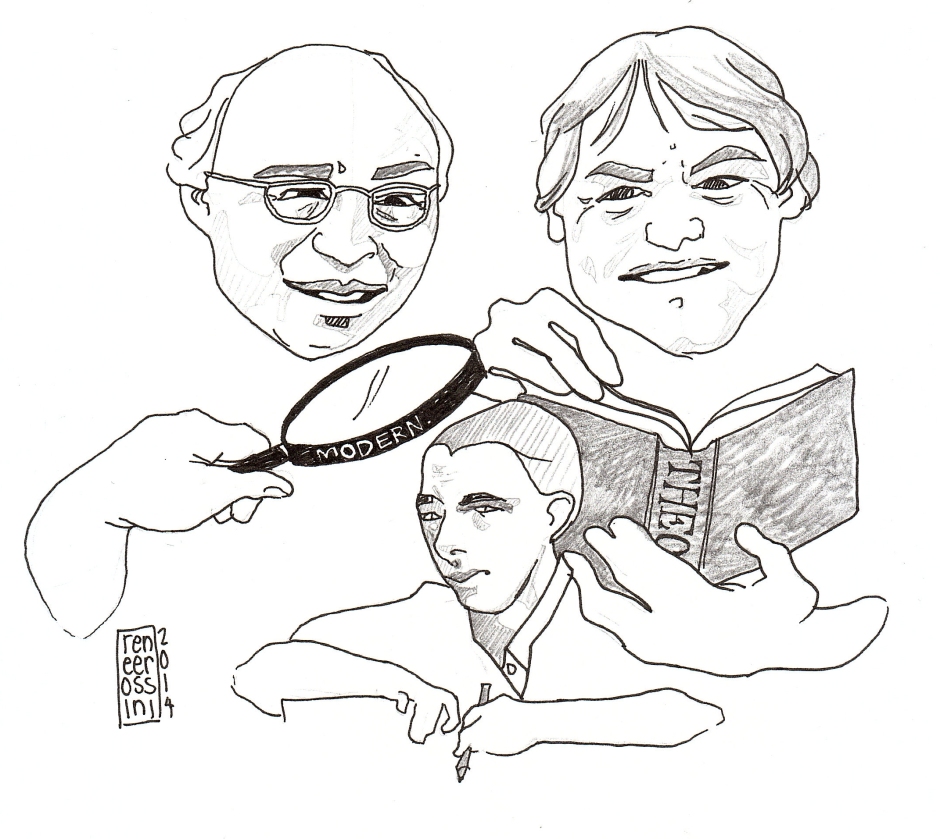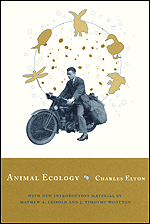Editorial by Leibold and Wooton, 2001
http://books.google.com.au/books?id=lZvgTuB9Gh4C&source=gbs_book_other_versions
Original text being reviewed is Elton’s classic ‘Animal Ecology’ from 1927
Published by The Univeristy of Chicago Press
ISBN: 0-226-20639-4
In brief:
PROS:
- It’s a classic! Come on!
- It’s complemented by a great synthesis of Elton’s ideas with modern theory by Leibold and Wooton which includes some ‘fringe’ ecologists many ignore
- It’s affordable
CONS:
- Doesn’t really challenge the BASE ideas of Elton, just adds modern complexities to the same theoretical base
CONCLUSION:
- Why not buy it?!
Look anywhere in ecology and biology in general and you will see Elton’s seminal 1927 ‘Animal Ecology’ quoted. This book, written under pressure from his then supervisor (Julian Huxley) in a phenomenally short amount of time was aimed at filling what they saw as a widening gap between themselves (modern ecologists) and their past (mostly physiologists and those obsessed with functional anatomy)[1].
As said by the providers of the modern introduction, it is a notoriously hard book to get hold of; most University libraries have some dusty copies sitting around from the 1930’s but no new editions have surfaced since this one. You can get it online (https://archive.org/details/animalecology00elto), but there’s something about having a BOOK. So its nice to have a convenient little pocket-sized paperback you can buy for a reasonable price and, for me, scribble all over.
What I found even nicer about this edition though, and what pushed me over the line in buying it, is Leibold and Wootons review and interpretation of Elton’s classical ideas from the perspective of modern ecological theory (well, modern in 2001). For each chapter of Elton’s original work they present a brief summary, then a synthesis of how these ideas have either persisted into/inspired modern ecology, or how they have fallen by the wayside.
One of the key themes I find them repeating is that of the ‘modernity’ of Elton’s ideas in light of contemporary theory. In a lot of ways, not much has changed. Many concepts presented by Elton (e.g. the power of indirect effects [Chp 5], the perception of environmental perturbations interrupting regulatory control [Chp9] and commentary on anthropogenic extinction and facilitation of exotic species [Chp8]) remain pertinent in the modern literature. Elton’s ideas are seen as somewhat of a catalyst, or a hint at some grander theory we are in the midst of developing.
This is a sentiment echoed in many modern theoretical books [2] and, for all intents and purposes, is completely accurate. The foundations of popular modern theory HAVN’T changed much – everything is still pinned tightly to some of the concepts that emerged at Elton’s time (i.e. competitive exclusion as espoused by Gause, Lotka and Volterra, perceptions of balance/equilibrium and density dependant population control enforced by biotic forces etc.).
A lot of the modern alternatives/complexities Leibold and Wooton present to modernise Elton’s ideas are, in fact, equally old they just come from the oft forgotten ecologists who attempted to present an alternative to the more popular concepts of density dependence and deterministic ideas of biological communities. Concepts of the environment being an important and potentially stronger driving force than biotic mechanisms (i.e. interactions with other organisms), the overzealous belief of ecologists in the 1960’s and 70’s in competitive forces, lack of faith in the boundaries of communities as causative entities and the indeterminism associated with a lot of modern theory (i.e. non-equilibrium and alternate stable states) are nothing new to those engaged in ‘autecological’ schools of theory [3]. And indeed, some of the concepts presented by Leibold and Wooton in this introduction are, at base, thoroughly autecological [4].
Yet, at the end of the day, the reference base and the examples given of seminal modern works or pertinent examples are still those focussed on the classical idea of some form of population control via a biotic mechanism (competitor, predator, resource) being perturbed in nature by some form of environmental interference [5]; an idea-set rooted in the feeling that the natural world, at base, is an organised and balanced thing with true laws that we CAN deduce, if we only squint hard enough and put enough band aids on the wounds of the classical theories and their mathematical proofs. And although some authors who present relatively sound theoretical alternatives to these old ideas are included [6] at the end of the day, this is another theory discussion that still seems kind of stuck between the ‘rock’ of things we see as real-world ecologists and the ‘hard place’ of the theory we are led to believe should be shaping those phenomena. The same rock and hard place Elton himself talks about being stuck in in the volume itself (and he develops in his 1935 work).
In this way, this is a great book for any ecologist. Just like us, even though now his work is considered seminal, he was also struggling to integrate theory and empirical observations. Just like us, Elton is a naturalist, he liked watching species, collecting data, observing in the natural state BUT he also felt both a growing dissatisfaction with the idiosyncracity of such knowledge and a strengthening pinch to integrate mathematical laws that were being projected onto ecology in the quest for a theory base composed of natural laws (like all the ‘other’ true sciences had). He, like most others, hitched his wagon to the growing theory set associated with density-dependence and biotic control.
Unfortunately, I feel a little bit like Leibold and Wooton’s introduction only emphasises how many others do the same, and thus how little we have changed since Elton’s conceptions, and urges me to put more effort into considering the alternatives they briefly gloss over.
Favourite quotes
Regarding why they chose Elton’s 1927 work (p. xx)
“Because we felt that Elton’s Animal Ecology was such a vital part of the basic literature in ecology…(plus we were tired of having to loan out our own copies or to borrow the book from the library!).”
Regarding the internal debate within Elton that persists today (p. xxxix)
“[Chapter 9] gives a counterpoint to the previous chapter’s focus on tight regulation…From Elton’s naturalis perspective the fact that many populations fluctuate greatly cannot be ignored despite his conviction of tight regulatory processes in nature… the contrast in perspectives between the two chapters seems to forechadow the intense devates over the role of density-dependant regulation of populations.”
Regarding Elton’s avoidance of Lotka & Volterra (p. xl)
“…why, despite the emphasis on trophic interactions as an organising theme, Elton did not invoke consumer-resource interactions… given the prior publication of Volterra’s classic paper addressing precisely this issue. Perhaps this omission can be traced to Elton’s distrust of ecological theory. Elton read Lotka’s work and had this to say: ‘Like most mathematicians he takes the hopeful biologist to the edge of a pond, points out that a good swim will help his work, and then pushes him in and leaves him to drown’.”
In conclusion (p. xlvi)
“Elton’s final comments are directed at encouraging fieldwork, emphasizing how an ecologist is often balancing the search for simplifying theories with the recognition of complexity in nature. It is worth keeping in mind that this balancing act will often lead to rhetoric and disagreement among ecologists.”
—————————————–
1) For a nice summary of where this book sits historically see: Cooper, G. J. (2003). The Science of the Struggle for Existence. Cambridge, Cambridge University Press.
2) ‘Theoretical Ecology; principles and applications’ edited by R. May and A. McLean echoes this same sentiment exactly: p111 when discussing concepts of density-dependant control of single populations “…there has been growth both in the understanding…[and] well designed field and laboratory experiments which illustrate these processes. The narrative, however, retains a unifying central thread, and much of the task of overview… lies in choosing good examples from an increasing panoply of choice.”
3) For a summary see Gimme Walter and Rob Hengeveld’s new book: http://www.amazon.com/Autecology-Organisms-Interactions-Environmental-Dynamics/dp/1482214148. Or, if you want to do some reading start looking into Andrewartha and Birch (http://trove.nla.gov.au/work/22326521?q=+&sort=holdings+desc&_=1410669550526&versionId=31316137)
4) For example, their definition of ecology on pxxi as “…crucial importance of feedback between organisms and their environment (including other organisms)”, their preference for Gleasonian perspectives on communities on pxxiii “…[d]efining communities on the basis of interactions automatically presumes that interactions among species are important in shaping community structure, an assumption which is not necessarily true”, espousing those who work to explain patterns of distribution and abundance via a synergistic view of the environment and the limitations it places on organisms on pxxiv-xxv. To name a few.
5) For example, some of the key references include Robert May (a mathematical ecologist who still works on resource competition), David Tilman (one of the modern proponents still pushing competitive niche exclusion), Robert MacArthur and Simon Levin (original sources of metapopulation theory which adds a spatial component to localised ideas about population control coming from density dependence).
6) However, some great “alternative thinkers” are included here as well, albeit as a note in passing, including Andrewartha and Birch, Pielou and Gleason.


